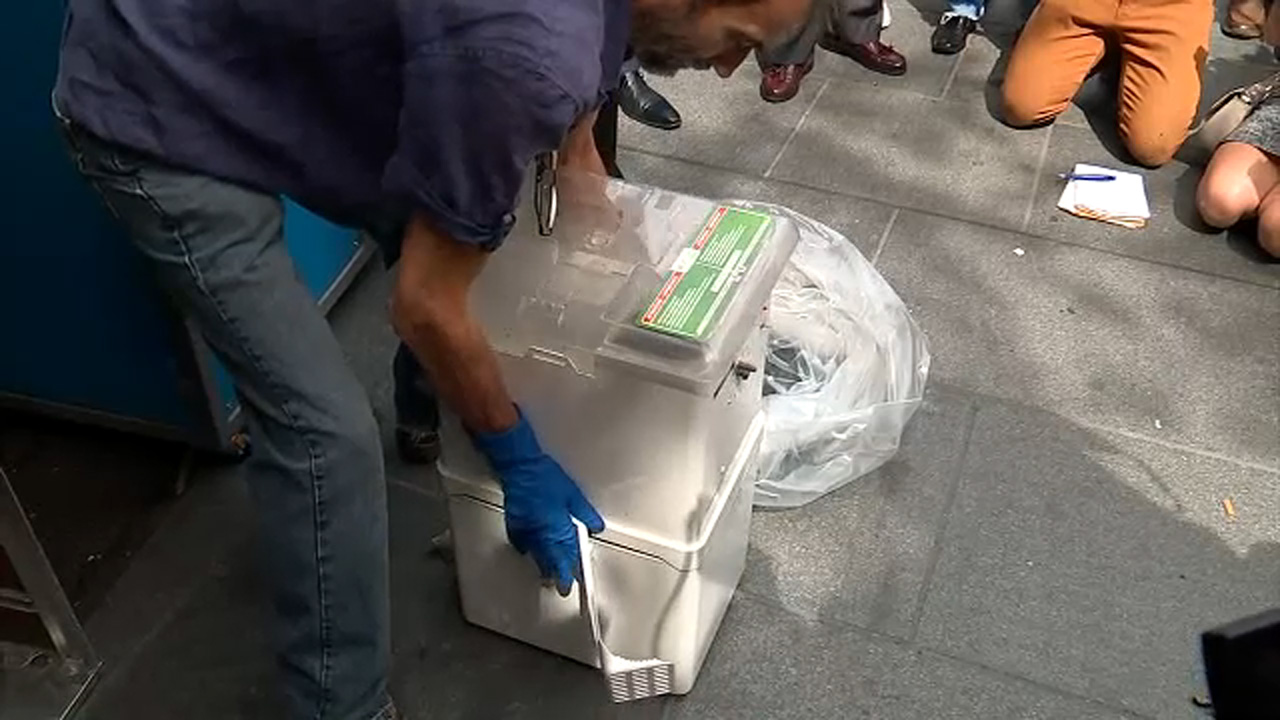Brooklyn officials tout rat crackdown success by showing off carcasses

BROOKLYN, New York City (WABC) -- Officials in Brooklyn showed off the success of a new rat trap pilot program Thursday by displaying the bodies of rodents that were caught and killed over the course of a month.
The new program aims to control the growing rat population around Brooklyn Borough Hall, and Borough President Eric Adams was joined by Rat Trap Inc. company officials, Council Members Robert Cornegy and Laurie Cumbo, and several community groups to tout the progress.
The pilot is said to use cutting-edge technology to capture and kill rats in a hygienic and sustainable way, trapping them in a sludge-like substance where they can remain for weeks without any odor.
A press release said the bodies of 90 rats caught at Borough Hall would be on display, but most in attendance had seen all they needed to when a trap was opened to show several rats floating in the liquid.
An employee scooped at least four dead rats from the trap and placed them into a trash bag, and then officials decided to close the trap and move on.
WATCH: Brooklyn officials give update on rat infestation
"A rat may be thinking they are going to eat when they go right up into this container," Adams said.
Four of the specialized traps, which contain bait, were set up around Borough Hall and successfully trapped over 100 rats.
"Go to eat food, it will rotate and drop them into the bottom," Rat Trap owner and president Anthony Giaguinto said. "Where there is a water, alcohol-based solution."
They die humanely, Giaguinto claims, and the trap even has a counter that indicates how many rats have been trapped. They are then cleaned out on a periodic basis.
The program comes as Brooklyn contends with a rise in rat infestations.
A recent study by RentHop found that Brooklyn called in 6,500 rat complaints to 311 in 2018, the most in the five boroughs, according to a press release.
Prospect Heights, Bedford-Stuyvesant and Bushwick in particular have reported an uptick in rat sightings.
Adams called on the city to scale up the pilot program to help address areas with rat issues throughout the five boroughs.
"We don't have a current rat plan in the city," he said. "Let's mandate, if it's not this device, then something of this capacity, that is going to rid us of the infestation in the area."
At a cost of $300 to $400 to purchase and maintain traps of this nature, officials believe they are worth the price.
Two years ago, Mayor Bill de Blasio announced a $32 million multi-agency plan to reduce New York City's rat population that targets the most infested parts of city.
"As a mom, I wouldn't want to live in a building or a home that had a rat or had to fear that, because our children in particular are so vulnerable," Cumbo said. "And so I am really here because we have to find new solutions."
Others see expanding possibilities.
"We can expand jobs while empowering people to improve quality of life and conditions for business using this device," Cornegy said.
Brooklyn officials hope the city considers the traps or another pilot project to curtail rat infestation.
----------
* Download the abc7NY app for breaking news alerts


